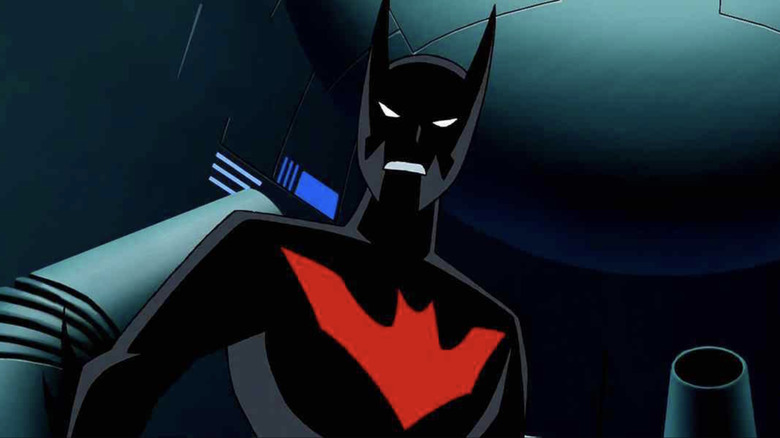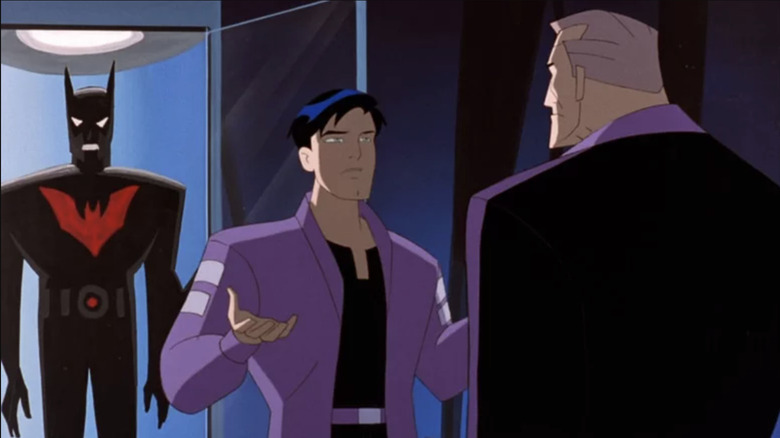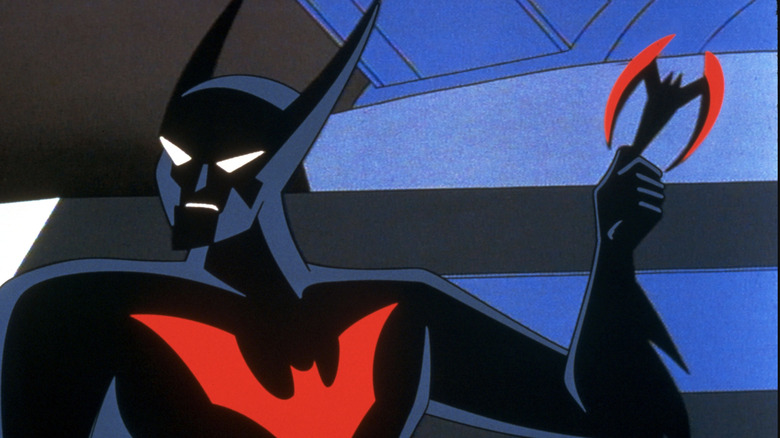One Of Batman Beyond's Biggest Challenges Was Convincing Fans It Wasn't A 'Rip-Off'
Perhaps the biggest challenge that came with "Batman Beyond" was following up on the massive success of "Batman: The Animated Series." The original animated series broke new ground and would later become one of the definitive versions of the Caped Crusader, largely thanks to the iconic voice of the late Kevin Conroy. When it came time for the sequel series to tell its own story, there was much skepticism at the thought of a teenage Batman. While the creative team behind "Batman Beyond" would contain several key players that helped to bring "Batman: The Animated Series" to life, it seems that the premise would draw mixed reactions.
However, "Batman Beyond" would move beyond the shadow of the animated series, earning itself recognition not just in television but also becoming an integral part of the DC Comics canon. But before the recognition and success, executive producer Bruce Timm and others involved with "Batman Beyond" had to prove their storytelling capabilities to those doubtful that a newer and younger Batman could be engaging and handle darker tones. Thankfully, the story they had planned for Terry McGinnis would arguably end up being a lot darker than anything out of the original animated series.
Making a statement with the pilot
In a "Batman Beyond" retrospective piece at IGN, series creator Bruce Timm recalled the distaste fans had with the premise of the show:
"From the minute we announced the show was going to happen, a lot of our fans ... already wrote it off. They were just like, 'Oh my God, this sounds horrible. This is going to be terrible. A teenage Batman? It's going to be a stinky rip-off. It's going to be for kids.'"
Interestingly enough, when Bruce Timm was first asked to make the show, he was also turned off by the idea. However, the base concept of a younger Batman would take shape, and Timm and his team would create a story that is not only as engaging as the original animated series but also just as dark, if not darker than what came before:
"And actually, that first two-parter, everything ... is so much more adult, darker, and uglier than pretty much anything we had done in any of our shows up until that point. So we knew that when we had that shot of Batman pointing a gun ... at a criminal, that was the best way to slap those [critics] upside the head and say, 'Nope, this is a good show, and you're going to love it.' I love the pilot. I love both parts of it so much. It's just a mission statement."
How "Batman Beyond" transitions from one Batman to another is done brilliantly and intensely. Moreover, it's a changing of the guard that Kevin Conroy himself believed to be organic and necessary for the story.
A series that shows growth
In the same piece from IGN, Kevin Conroy, arguably the best Batman, talked about the scene in the "Batman Beyond" pilot that showed Bruce Wayne's realization that he could no longer be Batman. With his age slowing him down, Batman is forced to use a gun to intimidate a thug. Bruce Wayne is disgusted by the actions he had to take to survive and chooses to retire. According to Conroy, the decisions made by his character display growth that was unexpected for animated series at the time:
"It's not a decision that anyone imposes on him. It's a decision he arrives at through experience, seeing that he physically can't do what he wants to do anymore. So for him to hand over his mantle willingly and take on an apprentice and teach him everything he knows, that just shows extraordinary growth on Bruce Wayne's part."
"Batman Beyond" expanded the world of the Caped Crusader in new and exciting ways, all while disproving concerns of it being a "rip-off" or being geared exclusively towards children. The series reinforced the idea of Batman as something more significant than just one person like Bruce Wayne, thus feeling like an evolution that carries over ideas and concepts from the original animated series. Overall, "Batman Beyond" managed to overcome misconceptions and now has its special place in the Batman mythos.


